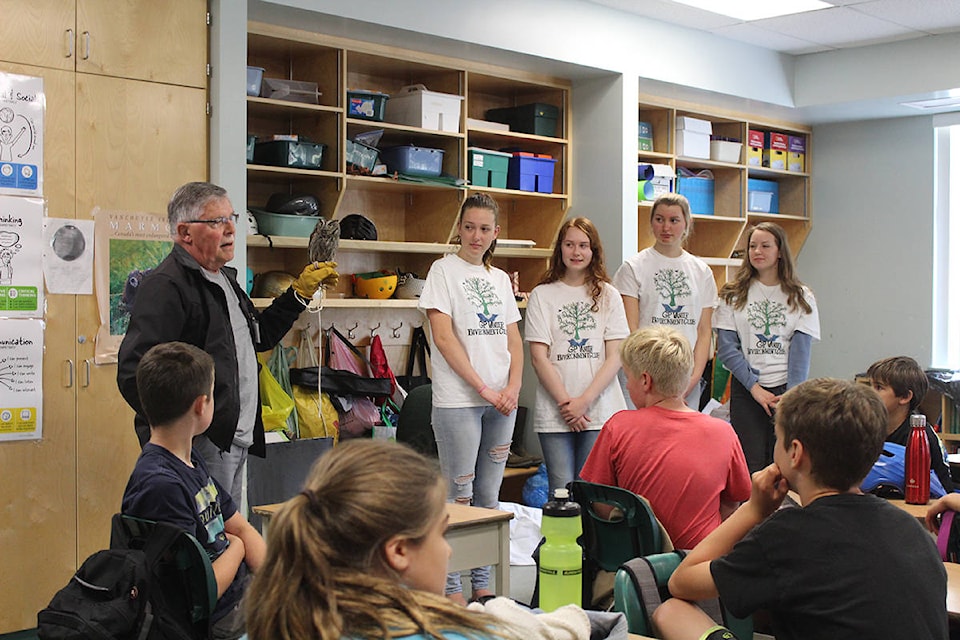Dozens of students at two Comox Valley elementary schools left class this week knowing a little more about a local endangered species.
Members of the G.P. Vanier Environment Club visited three classrooms at Courtenay Elementary School and Huband Park Elementary this week to teach the younger students about the western screech owl — an endangered bird that can be found in the Comox Valley.
While the small bird used to be prevalent on Vancouver Island, biologists say its population has declined between 30 and 80 per cent in the last decade. Reasons for the bird’s decline are both predation by larger animals - such as barred owls and house cats - and human development resulting in habitat loss.
Read More: Cumberland councillor concerned with developers’ impact on local owls
Read More: Researchers all ears in effort to save endangered western screech owl
A Grade 5/6 class at Huband Park Elementary is learning about the endangered Western Screech Owl today. @MARSComoxValley @ComoxValleySD71 pic.twitter.com/zdPEF2Hbyu
— Scott Strasser (@scottstrasser19) June 6, 2018
At Huband School on Wednesday, four G.P. Vanier seniors taught Grade 5 and 6 students about the owl’s nesting and reproductive habits, its diet, and other characteristics.
The presentation concluded with information on what local residents could do to help the western screech owl, including building nest boxes and keeping house cats indoors.
Following the presentation, volunteer bird handler John Robertson from the Mountainaire Avian Rescue Society (MARS) arrived with ‘Otis,’ one of the Merville-based animal rescue center’s two western screech owls. Robertson answered students’ questions about the small owl.
“I think this is the first step of several to get kids more involved with MARS,” said Robertson.
After the event, Grade 12 student Gabrielle Guay explained that MARS approached the G.P. Vanier Environment Club earlier this school year to see if they’d be interested in teaching younger students about the western screech owl. The club has been learning about the owl since January.
“Our combined interests with the environment and helping our community led us to take on this project,” said Guay.
Grade 12 student Erin Walters said it’s good for younger students to be educated about the screech owl, as it is part of the Comox Valley’s natural habitat.
“If they realize this animal is on Vancouver Island, that it’s directly in our community… if they know about it, they can take action,” she said.
Fun facts about the western screech owl, according to the G.P. Vanier Environment Club’s presentation and Robertson’s Q&A session:
- The western screech owl doesn’t build its own nests but instead burrows into pre-existing tree cavities, which make them hard to detect
- The owls require a nesting area with minimal underbrush surrounding the tree
- The owl is hunted by barred owls, which are larger and more prevalent on Vancouver Island
- The owl’s diet is carnivorous and consists mainly of small mammals such as mice and bats
- Female owls lay two to seven eggs at a time
- Nest boxes should be 10 feet above-ground, near an open field, and facing south. They should be laid down with dry wood pellets that are oil-free
- Contrary to their name, the owl does not actually screech. Instead, its call is a soft cooing noise
- In the wild, the owls only tend to live four to six years. They can live for much longer if in captivity
- The owl is typically only 20-25 centimetres tall and weighs about 150 grams. Its feathers are serrated and its colour allows it sufficient camoflouge in the forest.
